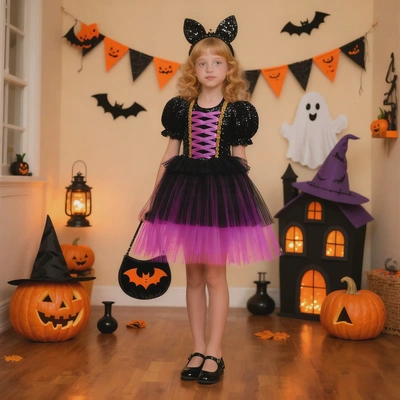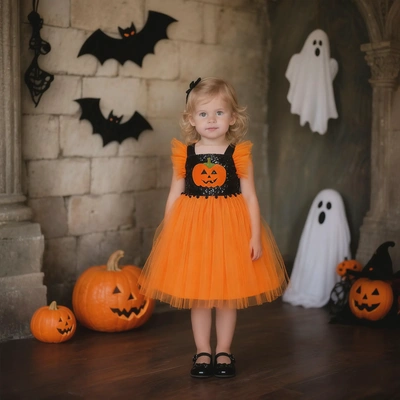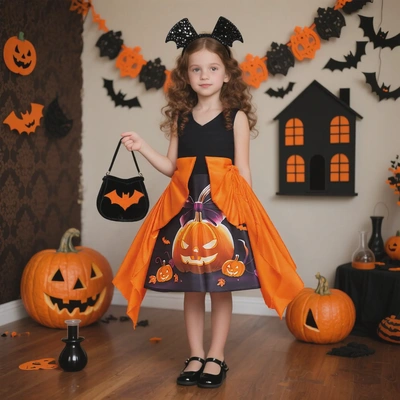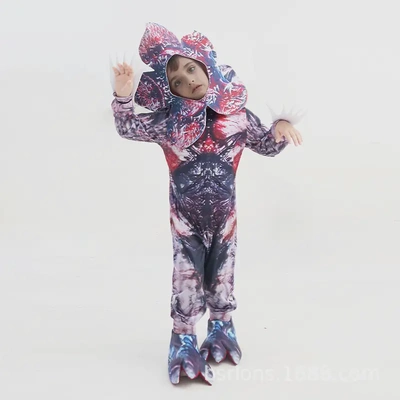How to Make Your Own DIY Anime Cosplay Costume like in China?
Introduction
In China, the cosplay community has witnessed remarkable growth, with enthusiasts showcasing high-quality DIY anime cosplay costumes. Creating your own cosplay costume not only allows you to express your love for anime but also gives you the freedom to add a personal touch. This guide will walk you through the steps to make a DIY anime cosplay costume inspired by the Chinese cosplay scene.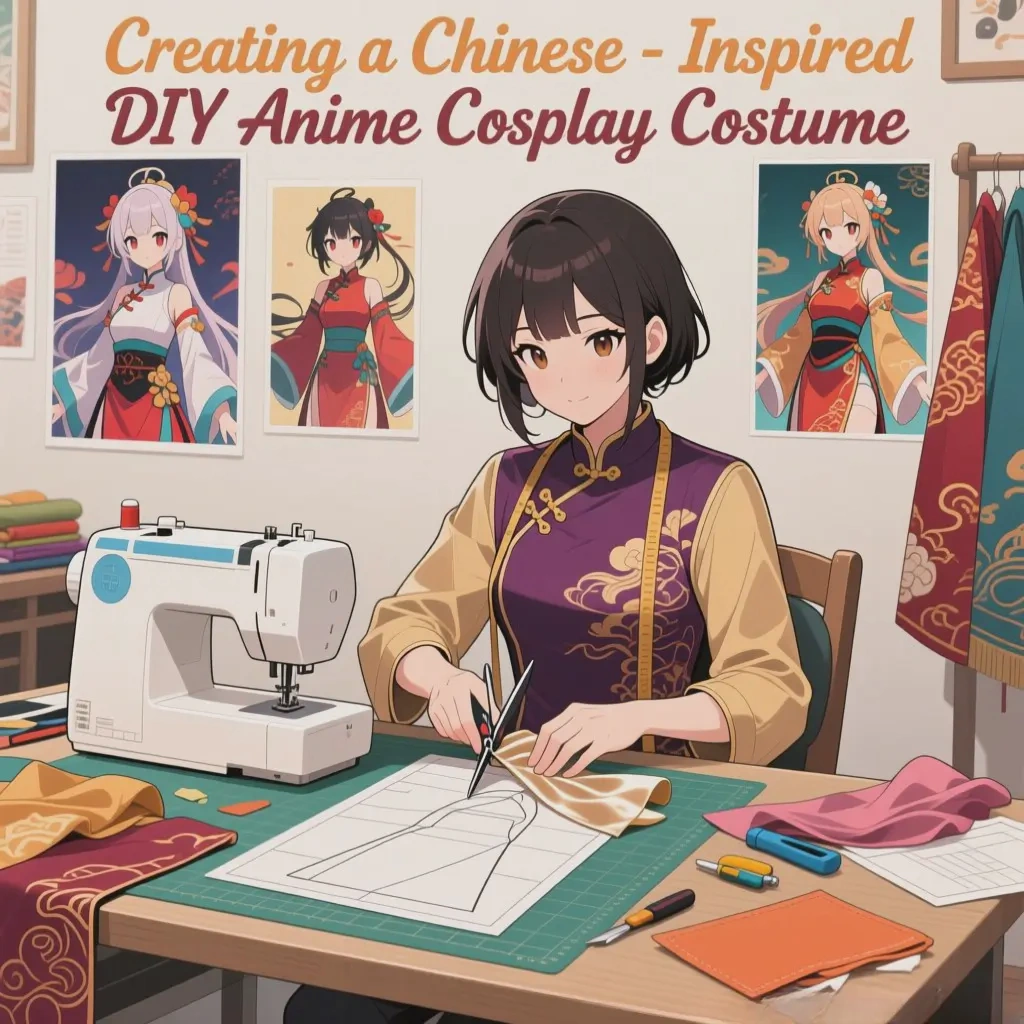
1. Costume Design Selection
1.1 Character Inspiration
- Popular Chinese-Influenced Anime Characters: Look for anime characters with Chinese-inspired elements. For example, characters from anime like "The Case Files of Lord El-Melloi II" have Chinese-influenced clothing styles. Some characters may wear traditional Chinese-style robes, qipaos, or hanfu-inspired outfits. These characters offer a unique opportunity to blend Chinese cultural aesthetics with anime charm.
- Personal Favoritism: Choose a character you are passionate about. Whether it's a main protagonist or a side character with an interesting design, your enthusiasm will drive you through the costume-making process. If you're a fan of a particular anime arc or story, the character from that segment can be a great choice.
1.2 Research and Reference
- Original Source Material: Dive deep into the anime's source material. Watch the episodes, read the manga, or play the related games to understand the character's costume in detail. Notice the color palette, fabric textures, and any unique patterns or symbols on the outfit. For instance, if the character has a signature embroidery on their sleeves, make sure to study it closely.
- Chinese Cosplay Communities and Platforms: Explore Chinese cosplay communities such as Bilibili's cosplay section or Weibo cosplay groups. Chinese cosplayers often share their own interpretations of anime costumes, along with construction tips and high-quality reference photos. These platforms can provide inspiration and real-life examples of how to bring the character's costume to life.
2. Material Preparation
2.1 Fabric Selection
- Chinese-Inspired Fabrics: Incorporate fabrics commonly used in traditional Chinese clothing. Silk is a luxurious choice for creating a smooth, flowing look, often suitable for characters with elegant robes. Cotton can be used for more casual or under-layer pieces, and it's also easy to work with. Linen is great for a natural, breathable option, especially for costumes that need to be worn in warmer conditions. For example, a hanfu-inspired cosplay might use silk for the outer robe and cotton for the inner layers.
- Color - Accuracy: Match the colors of the fabric to the character's costume as closely as possible. Take note of any color-coding in the anime; some characters may have specific color schemes that are integral to their identity. You can use fabric swatches or online fabric stores' color - matching tools to find the right hues.
2.2 Other Materials
- Embellishments: Chinese - style costumes often feature intricate embellishments. Look for Chinese - knotting cords to create decorative knots, which can be used on belts, sashes, or as hanging ornaments. Embroidery floss can be used to add detailed embroidery, following the patterns seen in the original design. Chinese - style buttons, such as frog - fasteners, can also add an authentic touch.
- Supportive Materials: Depending on the design, you may need materials like interfacing to give structure to collars, cuffs, or bodices. Boning can be used in corset - like parts of the costume to maintain shape.
3. Pattern Making
3.1 Basic Pattern Creation
- Measurements: Take accurate body measurements. This includes bust, waist, hips, shoulder width, and height. Use these measurements as a basis for creating a basic pattern for the main body of the costume. For example, if the character's costume is a loose-fitting robe, you can start with a simple rectangle-based pattern and then adjust it according to the style details.
- Style Adaptation: Modify the basic pattern to match the style of the anime costume. If the robe has a mandarin collar, add a separate collar pattern. If there are flared sleeves, adjust the sleeve pattern accordingly. You can use paper or digital pattern-making tools to create and refine the patterns.
3.2 Pattern Refinement
- Adding Details: Incorporate the details from the character's costume into the pattern. If there are pleats, ruffles, or unique cuts, mark them on the pattern. For example, if the character's qipao has a side slit, accurately mark the position and length of the slit on the pattern.
- Testing and Adjusting: Before cutting the fabric, make a muslin mock-up of the costume using the pattern. Try it on to check the fit and make any necessary adjustments. This step helps ensure that the final costume will fit well and look as intended.
4. Costume Construction
1.4 Cutting and Sewing
- Fabric Cutting: Carefully cut the fabric according to the pattern pieces. Use sharp scissors or a rotary cutter for clean edges. If the fabric has a pattern or print, make sure to align it correctly to maintain the design integrity.
- Sewing Techniques: Employ appropriate sewing techniques. For seams, use straight stitches for most parts, and zig-zag stitches to finish raw edges and prevent fraying. When attaching different fabric pieces, like sleeves to the bodice or collars to the robe, take your time to ensure a neat and secure join. Chinese cosplayers often pay attention to the quality of stitching to create a professional-looking costume.
1.5 Adding Embellishments
- Embroidery: Follow the reference images to add embroidery. You can use traditional Chinese embroidery techniques like satin stitch, chain stitch, or couching to create the patterns. This can be time-consuming, but it adds a high level of authenticity to the costume.
- Accessory Attachment: Attach the Chinese-style buttons, knots, and other embellishments. Frog - fasteners can be sewn on for a traditional closing method, and decorative knots can be attached to sashes or belts for an added touch.
5. Finishing Touches
5.1 Fitting and Alterations
- Final Fitting: Try on the completed costume one last time. Check for any tightness, looseness, or areas that may need further adjustment. Make any necessary alterations to ensure a comfortable and flattering fit.
- Hemming and Trimming: Hem the bottom of the costume, sleeves, and any other unfinished edges. Trim any loose threads or excess fabric to give the costume a clean and polished look.
5.2 Makeup and Hairstyle Coordination
- Anime-Inspired Makeup: Research the character's makeup style from the anime. Some Chinese-inspired anime characters may have soft, natural-looking makeup with a focus on enhancing the eyes. You can use makeup products to create the right look, such as false eyelashes, colored eyeshadows, and blush to match the character's complexion.
- Hairstyle Replication: Replicate the character's hairstyle. This may involve using wigs, hair extensions, or styling your own hair. Chinese cosplayers often pay attention to the details of the hairstyle, whether it's a traditional Chinese up-do or a modern, anime-inspired cut.
6. FAQ
Q: Do I need to be an expert sewer to make a DIY anime cosplay costume?
A: No, you don't need to be an expert. With basic sewing skills and patience, you can create a great cosplay costume. There are many online tutorials and resources available to guide you through the process, from simple stitches to more complex techniques.
Q: Where can I find Chinese-inspired fabric in China?
A: In China, you can find Chinese-inspired fabrics in fabric markets such as the Silk Market in Beijing or the fabric districts in Shanghai. You can also explore online fabric stores that specialize in traditional Chinese fabrics.
7. Conclusion
Making your own DIY anime cosplay costume like in China is a rewarding experience that combines your love for anime with Chinese cultural elements. By following these steps, from design selection to the final touches, you can create a high - quality cosplay costume that stands out in the cosplay community.

